|
The anniversary of Waterloo is usually an excuse for us to arrange a Napoleonic game. In the past few years we have covered Ligny, Plancenoit, D’Erlon’s assault and two full battles of Waterloo. Sadly we’ll have to pass on a face to face game this year. Instead, I have been busy rebasing my 15mm Napoleonics from Napoleon’s Battles to Lasalle, in anticipation of the release of Lasalle 2 at the end of the year. I have chosen 40mm base widths, with four foot or three horse in line per base. I know it isn’t fashionable but I prefer to base infantry in one rank rather than two. I think this is due to my origins in Bruce Quarrie’s 1970s rules: I don’t like the distorted depth that two-rank bases give to a battalion (although my 6mm Napoleonics are in two ranks).
In 2015 I hosted a seven-player refight of Waterloo, which was our first use of Sam Mustafa’s Blücher rules. It was great fun. The report of our game and the preparations for it is here.
0 Comments
Matt and I played an impromptu game of Blücher last Wednesday, having established that this really would be our last chance for a wargame before he moves away. I already had units based and labelled for the Waterloo campaign, so we played a game loosely based on the first Prussian attack against Plancenoit. Matt commanded two brigades of the Prussian IV Corps plus Corps cavalry, while I had the French VI Corps, plus Domon and Subervie’s cavalry brigades. Matt’s IV Corps artillery and the French Young Guard would enter as reinforcements. We had two MO dice each. The terrain was impressionistic but not too far off the real geography. Matt’s Prussians emerged from the Bois de Paris on the Eastern table edge, to find VI Corps deployed on high ground to the north east of Plancenoit. The Lasnes stream bounded the southern table edge. The village of Plancenoit was an objective for both sides and victory would go, either to the side occupying it at game end, or to whichever broke enemy morale first. The village was unoccupied at the start. I realised before the first turn that I had already broken the scenario, as the Blücher reserves rule meant that Matt could bypass VI Corps and walk his whole force into and around Plancenoit on his first turn. He is too canny a player to miss an open goal like that. As we were trying to recreate at least the flavour of the historical encounter, we agreed that Matt should treat the village as notionally occupied by the French, meaning that no unit on reserve movement could approach closer than 4BW away. Matt began the game by advancing on Plancenoit on his left with one brigade while screening my French on the high ground with the other. In response, I shifted some of VI Corps to my right, sending one unit into Plancenoit. This had time to form garrison but would soon be ejected by a combined attack by two Prussian units. Meanwhile Matt tried to cut the village off from the rest of the French force by sending cavalry against my centre. The results there came out about even but I was left with a dent in the line. The French Young Guard then arrived and assaulted Plancenoit, failing to break in on the first attempt but kicking the Prussians out with the second attack. Matt’s IV Corps artillery arrived and I started to pull back my left hand infantry unit, which had started to look shaky due to Prussian gunnery. On reflection this was a mistake as the unit soon found itself caught between enemy infantry and cavalry, with no support within reach. By now the turns were running down and Matt concluded he couldn’t eject the Young Guard with his depleted left wing units. Instead he drew back his left and focussed on reducing my morale before the turns ran out. I would have been wise to move back my own command and play for time, since Plancenoit was firmly mine. All I needed to do was hang on for a couple more turns. However we were both one morale point away from defeat and I thought I might break Matt as well as holding the village. What a glorious victory that would be! Of course it went wrong and Matt broke my morale first. Gamer, Know your limits! So the game ended with Matt victorious. VI Corps was badly battered and the Young Guard held Plancenoit, while the Prussians were stood off from the village, with one brigade nearly used up but the other still in goodish shape. Historically the Prussians would soon be reinforced and retake Plancenoit, only to be ejected again by French Old Guard, before the weight of Prussian numbers, combined with the failure of the Middle Guard to break Wellington’s centre, would oblige the French to give up the village for good and join the general retreat.
This was an exciting and absorbing fight, despite its last minute arrangement and the small number of units. Rarely for me, I still haven’t felt the temptation to fiddle with the rules, as they continue to give plausible outcomes and to be great fun to play. With time for preparation I would have checked the map more carefully and given the scenario a dry run, which would have highlighted the risk that the reserves rule could be used to change the nature of the encounter. I could address this by changing French deployment to allow them to occupy Plancenoit at the start, even though this wasn’t actually how VI Corps initially deployed. Alternatively, we could decide that the Prussians cannot take a reserve move because they have been force marching all day from Wavre. The figures we used are a mix of 1/72 scale plastics, which I have collected over many years to create the whole 1815 order of battle, originally based for Volley & Bayonet and Grande Armée. The number of figures per base is a bit sparse but I started this project on a budget. For games set in other campaigns besides 1815, I do prefer 6 or 15/18mm. All in all, our impromptu game was great fun and I’m glad we were able to fit it in. On 16 August we played a 6 player game using Sam Mustafa’s Blucher rules and 6mm figures, mostly produced by Commission Figurines. The battle was Montmirail, 11 February 1814, using the small scale variant in the rules. Montmirail is an encounter battle in which the French are heavily outnumbered at the start, while the Russians are present in their entirety from turn 1. It is a chance to use the French Guard, who actually constitute the majority of units, and to pit smaller numbers of high quality troops against a numerically superior opponent. But the Russians are no pushover: all their infantry count as steadfast and so are tough on the defensive. Scenario and Setup The scenario, now in its third version, can be found here. The original was a two player scenario at ‘normal’ scale, so one base per brigade. I expanded this to ‘small’ scale, roughly doubling the number of units, but then after a dry run I added a few more, based on a new guesstimate between the different sources. I stuck with the original decision to leave the Young Guard out because only Allied accounts said they were present and Allied witnesses were not great at recognising enemy units (cf mistaking naval artillery for marines of the guard at Leipzig). French accounts were clear that while the Young Guard’s then commander, Ney, was present, he had left his troops behind. If they did reach the field at all, I believe they will have done so after the battle was over. The battlefield was mostly easy to depict. As accounts of the battle say the roads were bad due to heavy rain, I only showed the two main roads: the East-West Little Paris road and the road going north to Chateau-Thierry. I also struggled over how to depict the waterlogged low ground on the Russian right/French left. After first trying to work out a way of modelling the contours here, I concluded I didn’t need to: the issue that affected the battle was the state of the ground, not line of sight. In the end I cut out several irregular pieces from a clear plastic wallet and placed these on the table to represent the area of low marshy ground. It looked quite effective and had the desired effect on play, making the fight in this area an infantry-only affair. How it Played Matt took the role of General Sacken, while Chris was Von Lieven, commanding XI Corps. Keith played Napoleon, Spencer was Ney and Nick was Nansouty. I umpired at the start and came on in the last quarter as General Yorck. At game’s start, the whole Russian army was on the field, facing (count them) four French units. Matt and Chris used the first turn to advance as far forward as possible and close down French options. Chris on the right assaulted the village of Marchais, a struggle that would last all game. Matt advanced his left almost as far as the French baseline, thereby threatening Nick’s flank. Nick slipped a brigade of conscripts into Marchais and tried to look brave with his cavalry. One of these units was almost crippled by Chris’s artillery, which had a couple of high rolling turns. Luckily for the French, Keith and Spencer then arrived with the Old Guard and some more cavalry. Spencer’s Old Guard expanded his room for manoeuvre by assaulting Matt’s cavalry on the Russian left. He pushed Matt back but with heavy losses. Infantry pay a high price for attacking cavalry, although if it is worth the gamble with anybody, the Old Guard is probably the best formation to try. Matt’s cavalry still being potent, Spencer now formed square with two Guard units and sent the other two against the left wing Russian infantry. At this point Napoleon himself joined one of these units and disappeared into the smoke, presumably ignoring the pleas of his aides to move himself out of danger. So what happened next? The French Left and Russian Right fought stoutly over Marchais, which changed hands twice before ending the day in disputed possession (one town base occupied by French and the other by Russians). This denied either side victory points for the town. At the other flank, the French assault chewed up several Russian units but used themselves up in the process. Yorck arrived late but in time to eliminate an exhausted Old Guard unit and to fill gaps in the Allied line. In the Centre, Chris launched an attack on La Motte which was only thinly held by the French, but just too late in the day. Darkness fell with the Russians nearing their break point but still hanging on. With possession of Marchais still in dispute, and to my private disappointment as I dislike a hung result, the day ended in a draw. What might have been
Hindsight is a wonderful thing. The Russian Left did well to take territory and let the French try to dislodge them. On their Right, Chris handled the assault on Marchais well but Nick made good use of his conscripts and the arrival of the Middle Guard allowed him to deny Chris undisputed occupation of the town on almost the last turn. I think, had Chris attacked La Motte sooner, Nick would have been stretched too thin and the outcome at Marchais could have been different. Between the two commanders in chief, Matt stayed in control of his battle while Keith got too involved in the assault by two Old Guard units and lost his overall grasp. Although a drawn battle according to the rules, I consider Matt was the better CinC on the day. By general agreement, Nick made good use of his meagre numbers. Twice in the last turn of the game, the Russians were within an unlucky dice roll of reaching break point. Fortunately for them, they didn’t. This was also fortunate for me, as after the game ended I realised I had made an umpiring mistake. Around a quarter of the way through the game, I had allowed Nick to send a cavalry unit into the rear of a Russian artillery unit, wiping it out. When I checked the photographs and reread the rules the next day, I found that this charge had been illegal, since the artillery’s rear had been protected by the 1BW zone of control of a neighbouring infantry unit. If it charged anybody, the cavalry should have charged this unit. So I apologise to Matt and Chris for my error: you were two units away from breaking at nightfall, not one. I hope the team enjoyed the game. There’s more to be explored in this scenario and I have kept the stickers on the units, in case we can have another go at it some time. It’s curious that wargamers don’t often replay the same battle with miniatures, whereas it is common to play the same board game several times over. I try to arrange a couple of multi player wargames a year and have started thinking about a theme for the next one. Period Choice of period mostly depends on what I have read most recently. This time I have gone Napoleonic, as I am thoroughly enjoying John R Elting’s Swords Around a Throne. This period is also a reliable choice for most other players. Rules Sam Mustafa’s Blücher rules have proved a good set for our multi player games, being easy to learn yet still atmospheric and satsisfying to play. Choosing a Battle I have selected Montmirail, 11 February 1814, the middle and largest engagement of the 6 Day campaign. We played and enjoyed it in the 1990s using Napoleon’s Battles. It is a three way battle with the French heavily outnumbered at the start, with numbers increasing through the day. It is also notable for the preponderance of Guard units in the French army so actually gives you a chance to use all those guard units in anger. Sources I started with F Loraine Petrie’s Napoleon at Bay, a clear and balanced analysis of the campaign. I also have the French language Napoleon, 1814 by Jean Tranié and JC Carmigniani. On line, I found an excellent source called les batailles, website address http://www.lesbatailles.com/page9/page9.html. This has a detailed and careful account with extensive orders of battle and clear maps. The Wikipedia article on Montmirail is ok but this includes some mistakes about the units present and its account of the battle is less clear. Creating the scenario At the standard Blücher game size, Montmirail comes out as a small engagement with few manoeuvre units on either side. But using the option for small scale scenarios, it becomes more interesting. Sam Mustafa is not worried by the constraints of fixed ground and time scales in Blücher but I still want a framework for scenario planning. Fortunately his previous grand tactical set, Grande Armée, was clearer on these issues so when Blücher is unclear I refer back to them. Since this is a small scale battle I settled for 1BW to equate to 150 yards. For time, I decided one hour would be represented by 4 game turns each. This is important for planning the arrival of reinforcements. The playing surface came out as follows on an 8x4 feet table, with 1BW of 150 yards being 3”. The Allies deploy at the top of the table and the French reinforcements arrive at the bottom. The grid is read as lettered columns and numbered rows (thus, Fontenelle is in box G1). The darker areas to the left are lower than their surroundings although the only time this matters is when units cross the contour line. Creating a reliable OOB is difficult at the best of times but even more so for 1814, when some Allied strengths had fallen drastically and bookkeeping for all armies, but especially the hastily assembled French forces, was sketchy. Accounts differ radically but I decided to trust the Batailles website as this seems very well sourced and argued. It also, to be frank, produces a game OOB that seems nicely balanced, which is important for player satisfaction. I accepted the seemingly majority view that there was no Young Guard at the battle. Marshal Ney, commander of the Young Guard, was present on his own and led Friant’s division with distinction, but his young guardsmen were several kilometres short of the battlefield.
In the next post I will discuss choice of figures, summarise the events of the real battle and upload the final scenario. I had a gaming-heavy weekend last week, starting with the annual trip to Warfare in Reading. This continues to be my favourite show on the circuit. The stalls seemed pretty busy and I hope the traders made enough to come back next year. I picked up some 20mm AFVs and scenery bits for Battlegroup, a copy of the Lardies’ What a Tanker! rules and a lot more MDF 6mm Napoleonics from Commission Figures. I bought my first Commission figures at Warfare 2017 and am really impressed with them. At playing distance they are indistinguishable from metals and at £2 for 96 infantry, they are fantastic value. My friend Keith came up to Warfare from Devon and stayed overnight. We played a game of Blücher when we got back from the show. I’d written a scenario for Möckern, the northern battle on the first day of the battle of Leipzig, 16 October 1813. I had first planned to use 15mm figures but realised I had enough 6mm figures to play it at that scale, provided I paint up a couple more French units. I wanted to see how 6mm units affected the feel of the game so after a couple of evenings with the paintbrush I had the full order of battle. The two extra units were of the French Naval Artillery, who wore blue greatcoats with red epaulettes and were mistaken by their opponents for sailors of the Guard. The scenario is on the Napoleonic scenarios page here. The background to the battle is as follows. On 16 October 1813 Napoleon’s army stood at bay in the city of Leipzig, surrounded by advancing Allied armies. Napoleon’s plan for the day was to strip his northern flank to reinforce an attack by his troops facing Schwarzenberg’s Army of Bohemia to the South. He ordered Marmont to take his VI Corps out of its entrenchments north of Leipzig and set off southward. However, after Marmont had abandoned his position and was approaching Leipzig, Blücher’s Army of Silesia appeared from the North. On his own authority Marmont halted his retreat and took up a defensive position before the city, with his left flank resting on the village of Möckern. Thanks to Blücher’s aggressive advance, Napoleon would now have fewer troops at his disposal against Schwarzenberg. Moreover, his northern flank was significantly at risk from Blücher’s advancing army. Fortunately for Napoleon, Blücher did not take full advantage of his opportunity on 16 October. Blücher believed that significant French forces were approaching from the North East and he feared an assault on his left flank. He spent most of the battle on that side of the field and he held back much of his army in anticipation of an enemy attack that didn’t happen. The burden of the day’s fighting consequently fell most heavily on Yorck’s First Corps. The scenario gives the Allies only those forces that were committed early enough to affect the outcome. By doing this, what would otherwise be a walkover becomes a tense contest. As the Allied commander, Keith began the game with an attack by Prussian Grenadiers on the village of Möckern, which was held by a Naval artillery brigade. The Grenadiers were his best troops but the odds were still against them. Even so they kicked my troops straight out of the village. My reserve brigade pushed the Prussians out in my next turn but Keith’s second brigade was on hand to bundle out my troops again. By this time his main body had come up and assaulted my centre. Now that more of my units had been pinned by this advance, I had no more reserves to retake Möckern. Before long I reached my morale limit and the day was lost. The game followed the events of the historical battle pretty well. I might have hoped to hang on to Möckern for a bit longer at the outset, as the dice were firmly in my favour. But it was fitting that Prussian Grenadiers should roll the best possible result. I particularly like the way Blücher handles fighting for built up areas. Victory goes to the side with the last formed reserve. If you want to hang on to a town it is vital to have fresh troops in support within a Charge move away. The new occupants will be easier to evict if you don’t give them the time to form town order. In hindsight I made two important mistakes. One was to open fire with my artillery at too long a range and against the wrong targets, thereby wasting shots. The other was to advance cavalry to engage the enemy near his baseline. Thinking about it after the game, I should have held all my force back to wait for the enemy assault. A cavalry unit is if anything more dangerous when uncommitted. I was already outnumbered and there was no merit in reducing my strength still further. How did it feel using 6mm figures? Very satisfying. We liked the impression of distance and the look of the table was more convincing than with my 8-man-per-brigade 20mm armies. I had to make do with some unfinished movement trays that weren’t quite the right shape but I was still happy. I am now waiting for pay day to order a new batch of proper-sized trays.
I love this hobby! On 18 August we played a day-long refight of the battle of Ligny, using Honour Games’ Blücher rules and 20mm plastic figures. We began around 10 and finished at 6, with the French just meeting their victory conditions. Oddly, the Prussian players seemed happier at the end of the day than the French. Rules, figures and scales Blücher is a grand tactical rules set where each unit represents roughly a Brigade. It focuses on the level of detail that would interest an army commander rather than a brigadier or battalion commander. It’s pedigree is excellent. Sam Mustafa’s first grand tactical set was called Grande Armée, which came out some years ago. He then produced the simplified Fast Play Grande Armée, which dropped a lot of detail. Finally came Blücher, which stripped back the detail even more. At each stage the rules have become more elegant but they keep a period feel and are a subtle challenge to master. Blücher’s ground scale is adaptable but I use 1” to 100 yards, the scale of Grande Armée, Volley & Bayonet and Napoleon’s Battles. This produces 3” Square unit bases. The figures are all plastics by various makers, collected over many years, with quite small unit sizes. This was a deliberate choice, partly to save cost and partly to encourage my sons who were young at the start of the project. Most of my Napoleonics are 15mm but I have never collected figures for the Waterloo campaign in the smaller scale. Keeping the players guessing Three of the players know the Waterloo campaign very well so I had to set up a way for them genuinely not to know whether either side would be reinforced from Quatre Bras, where Marshal Ney faced Wellington’s steadily reinforcing army. I wrote a decision tree for the events off table, which could have ended in a range of outcomes, broadly: French reinforcements, Allied reinforcements or nobody, at least in time to affect the game. Huw took the role of Napoleon, supported by Tim (Gérard) and Ian (Vandamme). Keith was Blücher, with Matt (von Zieten) and Nick (von Pirch). I like each player to have a characteristic so made Tim inspiring, Ian vigorous, Matt steadfast and Nick heroic. If you don’t know these rules, these traits translate as good on the attack, good at getting troops moving, good on the defensive and capable of rallying lost combat power. Napoleon was a legend but not on his usual energetic form; Blücher was also a legend and mobile, which made it easier for him to send in the troops than a standard C in C. Being a legend improves your army’s break point. For orders of battle I used a few histories, mainly volume 1 of Peter Hofschroer’s Waterloo Campaign and a French language history of Ligny by Alain Arq and others. For starting strengths and general organising I used the 100 Days unit cards, released by Honour at the same time as Blücher. These cards make sorting out and deploying the army very easy. Deployment The Prussians were obliged to deploy 1 Corps first, strung along the river Ligne. The French were then to deploy 3 and 4 Corps and their three cavalry corps anywhere on the field up to 4 base widths from a Prussian unit. Finally the Prussians deployed 2 and 3 Corps then the French had the first turn. How it went The game began with Tim/Gérard attacking the Prussian right, while Ian/Vandamme screened Ligny along with the three cavalry corps. Evidently the French didn’t want to get bogged down fighting for this village. However the screening force was much the biggest French formation and while it sat watching Ligny, Tim bled his Corps dry on the French left. The Prussians meanwhile made several counter attacks against Tim, then Keith sent Nick/Pirch over the Ligne on the Prussian left to put pressure on Ian. This worked well as it constricted the French position and put their right wing on the back foot. As the elan of Tim’s units ran down trying to dislodge Matt and Ian’s wing faced off against Nick, Huw was reinforced by the Guard and, not long after, by 6 Corps. We learned after the game that Huw had ambitions to use the reserve rule to deliver a wide flanking attack with these reinforcements, but felt thwarted by his narrow deployment zone and after a couple of turns’ delay, he launched an attack up the Prussian centre. Meanwhile, off the table... Each French turn after turn 11, I rolled on the decision tree. Every roll went in favour of reinforcements arriving with Napoleon. In summary, the story grew as follows. Ney began his assault on Quatre Bras early. He kept his whole command together (meaning no enthusiastic ADC gave D’Erlon verbal orders to march eastwards) and used both 1 and 2 Corps to overwhelm the Netherlands contingent before it could be sufficiently reinforced. He then carried out his original instructions from Napoleon and directed D’Erlon towards the Ligny battlefield. Rolling for losses and delays, I concluded that in the end two divisions and the Light cavalry of D’Erlon’s Corps would arrive at Ligny, late in the afternoon but in time to influence the outcome. News reached Huw that Ney had taken the crossroads at Quatre Bras and despatched D’Erlon towards the Ligny battlefield. When these arrived on the table he gave their command to Tim, who found the fresh troops a great boost. With the revelation that he would not be reinforced by Wellington as expected, Keith took stock. His left was doing well against the French right, which continued to retire before 2 Corps. But the right was now paper-thin, facing fresh troops, while the centre was buckling under the punch of the Imperial Guard. Keith ordered his army to withdraw, under the cover of 2 Corps. When we reached the last turn of the gaming day, the Prussian line had started to contract from the right and rotate clockwise, as it withdrew on Sombreffe. The French meanwhile had finally cracked the Prussian centre and were advancing to cut off the Prussian right. The Prussians were close to their break point and the day went to Napoleon. Hail the happy losers
And here is the curious thing. The French victors seemed to feel a bit flat as the day ended, whereas the Prussian team was brimming with good humour and pleased with its performance. Why was this? Well, I think the players on the side that lost in history may feel less pressure to win the game: the Prussians did very well and cooperated effectively, with messages flying in all directions throughout the day. They didn’t win but were well placed to fight another battle. The French on the other hand came close to a bigger victory than they achieved: an earlier assault by the Guard could have cut off half the Prussian army. Also, I fear that Huw felt thwarted, not by the performance of his side but by the scenario and rules. His first hope was to send the Guard on a sweeping reserve move to fall upon a Prussian flank, but the field was constricted by the table edge and he couldn’t calculate a ‘legal’ route that would deliver his units unobserved on the enemy flank. I do sympathise and can’t change the fact that the table was 4 feet wide so he did not have space at the rear to flank March. That said, the French right could have deployed much further forward than they did and on top of that they were then soon retreating from their starting positions. When the umpire’s happy, everybody is happy Overall I was very pleased with the day. I think the game was well balanced and both teams played in good spirit. The decision tree for events at Quatre Bras gave a plausible result and I will use the idea again. I think the Blücher rules are perfect for a multiplayer game like this. Between 1030 and 6pm with a break for lunch, we played the full 28 turns and had very few rules quibbles. We had all played the rules before but not for some time and they came back easily. My note to self for future games is that I should check in with Commanders in Chief a few times during play, to check if they feel able to do what they wish. It hadn’t occurred to me until he said it at the end that Huw felt unable to act because of the table size. Had he told me his outflanking plan I could have worked out a way to make it possible or to explain why it wasn’t. When the game isn’t a tournament, I think the umpire should show a bit of flexibility if this helps the story to flow. I was grateful to all six players for giving up a summer Saturday and pitching in with such good humour. Multiplayer Wargames are a rare event but they have to be my favourite part of the hobby. Getting the figures together Three years after we replayed Waterloo using Honour Games’ Blücher, I will be hosting a multiplayer refight of Ligny later in August. I have started organising the units, which has been nice and straightforward using the 100 Days unit cards. The figures are soft plastics from Airfix, Revell, Italieri, Esci, Zvezda and Hät. Some of them are 40 years old or more, since my friend Keith presented me with his boyhood Airfix Waterloo collection. My original plan at the start of the 1815 project had been to make a separate figure base for every Brigade in the campaign. To be able to refight Ligny, this would have required me to paint up the Prussian III Corps and French III and IV Corps in their entirety. That makes a lot of work and I don’t have that much time to prepare. Also, while there might be satisfaction in completing the whole Orbat, when would I actually play using every unit that took part in the campaign? So I decided to recycle some existing units. First I decided to relabel the French II Corps to cover most of the 3rd and 4th Corps, since one habit veste is pretty much like another. For the Prussians I already had II Corps from the Waterloo game, along with a few I Corps units. If I repurpose my IV Corps units I can make most of III Corps and a fair chunk of I Corps. However. Ever since I bought David Nash’s Prussian Army 1808-15, published by Almark, back in about 1970, I have loved the varied uniforms of the post-1812 army. I am proud of the fact that every Prussian unit painted to date has the right uniform for the regiment represented. Could I bring myself to relabel Silesian Landwehr as Westphalian, without overpainting the facing colour? Who besides me would notice, still less care if the uniforms didn’t fit? As it turns out, I realised I couldn’t do it. Even if others didn’t notice, I would know that the Prussian uniforms are wrong. I have therefore started a programme of repainting, adapting and adding to my Prussian collection so that every unit is properly dressed. And there are some great uniforms to recreate. I started with the 28th and 29th Line in I Corps, who until 1814 had been regiments in the Duchy of Berg and still wore their white Rhine Confederation uniforms. I used some of the old Airfix French that Keith had passed on. Next comes the 30th and 31st regiments in III Corps, which had previously formed the Russo German Legion and wore Russian uniform. I have ordered a box of Zvezda Russian infantry to cover these units. For the rest, I am repainting facing colours where this is easy and painting more demanding colour combinations from scratch. I also need to add more Prussian horse so have painted the West Prussian Dragoons and am about to start some Landwehr lancers. If this sounds like amazing dedication, bear in mind that I represent foot units with only 8 to 10 figures and cavalry with 4 or 5 horsemen. So I can complete a unit in an evening as long as I don’t have distractions. The clock is ticking however and I can’t afford to slack. Source Materials Meanwhile, I am thinking about aspects for inclusion in the scenario. There are two main what-ifs: D’Erlon’s I Corps movements and the arrival of Lobau’s VI Corps. D’Erlon barely contributed to the day because of countermanded orders, while Lobau only arrived from Charleroi as the battle ended. Both could have arrived earlier and contributed to the action. To help decide what, if anything, I do about these absent formations, I have been rereading Colonel Charles Chesney’s Waterloo Lectures, first published in 1868 and reprinted in the 1990s by Greenhill. Chesney is fascinating. His book is not a conventional narrative history of the campaign and in fact he presumes the reader already knows the main events. Chesney’s purpose is to analyse the various myths and assertions about the battle that were already manifold by the mid 19th century. His main target are those historians who placed blame for the French defeat on everybody else but Napoleon. It is striking how much of the mythology is still current, including in some modern histories of the campaign, not to mention in the entertaining hogwash that is De Laurentis’ film of Waterloo. I suppose two world wars didn’t help the British to give due credit to Blücher and his army, or indeed the Germans under Wellington’s command, for their contribution to victory. In this Chesney is scrupulous: he stresses the immense achievements of the German-speaking troops and places Wellington’s personal relationship with Blücher at the heart of the success. He also argues persuasively that neither Ney nor Grouchy were to blame for the alleged errors of judgement and action that were later used by Napoleon to explain away his defeat. Where is D’Erlon?
In the case of Ligny and Quatre Bras, Chesney points out that Napoleon’s order to Ney on the 16th was only to detach a Force towards Ligny once he had taken Quatre Bras with both Corps. It may have been unfortunate that due to countermanded orders D’Erlon was unable in the end to contribute on either field, but Napoleon was not counting on his arrival at Ligny, at least for some hours. Indeed, when the head of D’Erlon’s column first appeared in the distance, Napoleon was surprised to see it and delayed an attack on the Prussians until he found out who it was. Given this interpretation, I am not inclined to make D’Erlon’s arrival a particularly significant factor in the scenario. VI Corps Lobau’s VI Corps spent most of the 16th in reserve a short distance from the Ligny battlefield and came up too late in the day to contribute to the outcome. In his case I think the French should be able to use him if they wish, since he had not been given a competing task for the day. Bülow Another ‘what if’ is whether Bülow’s IV Corps could have been present at Ligny if he had shown more energy or his orders had been clearer. I think the answer is ‘probably not’. He had the furthest to travel from his cantonments and his orders did not tell him to come to Ligny. It seems to me that the only circumstances in which he could have been present on the field would have been if the army had been ordered to concentrate sooner than it actually was. This takes the ‘What If’ so far into alternative events that we could at that point change any number of factors and end up fighting a different battle altogether. Fine if we were to refight the campaign but we will only be looking at the battle of Ligny. So in summary, Bülow is out, Lobau can arrive early and D’Erlon might appear but he also might be recalled and/or arrive late, having stayed with Ney until Quatre Bras was taken. I’ll try to turn these possibilities into a series of dice rolls, to keep our generals guessing. I will be painting hard over the next several days and must then think what we need for the battlefield. There must at least be a windmill for Napoleon’s use.... On our last full day at Waterloo we visited the Wellington Museum in Waterloo town and Napoleon's HQ at Le Caillou. The Wellington Museum is under renovation and felt a bit dowdy compared to the slick venues on the battlefield, but it had real charm and atmosphere, particularly the rooms where Wellington wrote his despatch while his ADC lay dying in the bed next door. The church opposite the museum has several memorials, mostly to British and Dutch Belgian officers and there was one plaque dedicated to all the French dead. We ate lunch at the Brasserie du Couvent, highly recommended for hearty pig-related dishes. We almost gave the Emperor's HQ at Le Caillou a miss but were so glad we didn't as it was another beautifully presented little museum with excellent audio guide. On the last evening, Keith and I replayed D'Erlon's attack on the dining table of the Gardeners House, using the Cigar Box Battles Waterloo mat, Sam Mustafa's Blucher rules and his 100 days card set. It was a never-to-be-repeated chance to play Waterloo at Waterloo. I will choose figures over cards whenever possible but Sam's unit cards are perfect for a situation like this. We had a wonderful few days and my enthusiasm for the 1815 campaign is back on fire. I have probably read more about Waterloo than any other battle but still learned masses from the museums and walks around the field. I would never have dreamed it might be possible to be staying in the chateau of Hougoumont, looking out over the courtyard with a glass of wine and some kettle chips. Magical!
Here are some thoughts and pictures after last weekend at Waterloo. As we were staying in the Chateau grounds, I will start at Hougoumont. It looks lovely after the renovation. The refurbished buildings are fantastic and the approach to the South Gate, which was under constant attack on the day, looks as it did in 1815. The North courtyard, missing several buildings that caught fire during the battle, is interesting for the surviving chapel and the memorial to the Scots Guardsmen who closed the gates at a critical moment, trapping a group of French infantry inside and saving the chateau from capture. The walled garden was bigger than we expected and overall, we were struck by how large the combined position of chateau, garden, woods and orchard must have been. The multi media show in the Great Barn was clever, absorbing and actually very moving. It was a highlight of the holiday. We spent a whole day at the Mémorial in the centre of the Allied position, which covers the Lion Mound, Panorama and museum all in one ticket. We climbed the Lion because it was there but it didn't thrill. The Panorama was impressive. Pause for a Wellington sandwich and beer at the brasserie on site, then back for more. The museum was a revelation, with slick interactive displays and some great use of multimedia. There are dozens of uniformed mannequins, with extensive written and audio information about the armies, men, their uniforms and equipment. The 4D film is great fun. I especially enjoyed being under the guns of a French battery as it fired. The massive shop had a mixture of good books, expensive replica firearms and cheerful tat. The Napoleon T shirts are on sale there; you need to go to Hougoumont to pick up a Wellington. On day three we walked from the Allied ridge cross country across to La Belle Alliance, then down to Plancenoit and the Prussian monument. Back up to the Brussels road, past La Haye Sainte and on to the crossroads. We had an excellent lunch at L'Estaminet de Josephine, washed down with Waterloo beer, brewed at the Mont St Jean farm. We came back to Hougoumont just ahead of the 2eme Régiment de Chasseurs à pied, a reenactment group of twenty or so men and a dozen family members dressed as vivandières. The group demonstrated drill and musketry in the chateau gardens off and on for two hours. They were friendly and informative, happy to tell us about the details of their uniform and the life they recreate. Alongside the Chasseurs were a couple of gendarmes, a Guard pontonnier and, a little surprisingly, a customs official in a green uniform. They also serve...
On 6 September we played the Battle of Waterloo again. I wanted to use the battlefield one more time before tidying it away and so invited four new players to come along. As in the first refight, this group were all new to the Blucher rules. In addition, only one of them had played a historical war game before: the others drew on memories of playing Warhammer. They all picked up the rules quickly and we fought the game to a conclusion inside one long day. In this game, the Allies deployed with a strong right flank, expecting a French left hook. The French duly obliged, but held on to a strong reserve including their two Heavy Cavalry Corps. Once the French left had engaged them, the Allies assaulted with their own left flank. The French screened this attack with a very light force and then launched their reserves against the Allied Centre. Thinned out to right and left, the Allies buckled between Hougoumont and La Haye Sainte. Despite the best efforts of the British 1st Division, the French juggernaut chewed up its opposition and Allied morale broke. While the French had lost a lot of élan points, they had not lost many units so were a long way from their break point at this stage. It had been a great game and all players said they would happily play again. With hindsight, it might have been better to use another scenario to introduce the rules, as the players learned some useful lessons to their cost. Unit handling got a lot better in the course of the day, especially by the Allies. We agreed to meet again soon for another game. Next time we might try the Battle of Montmirail, 1814, a scenario I’ve played several times with Napoleon’s Battles. I’ll be interested to see how this works with Blucher.
|
Archives
November 2023
Categories
All
|
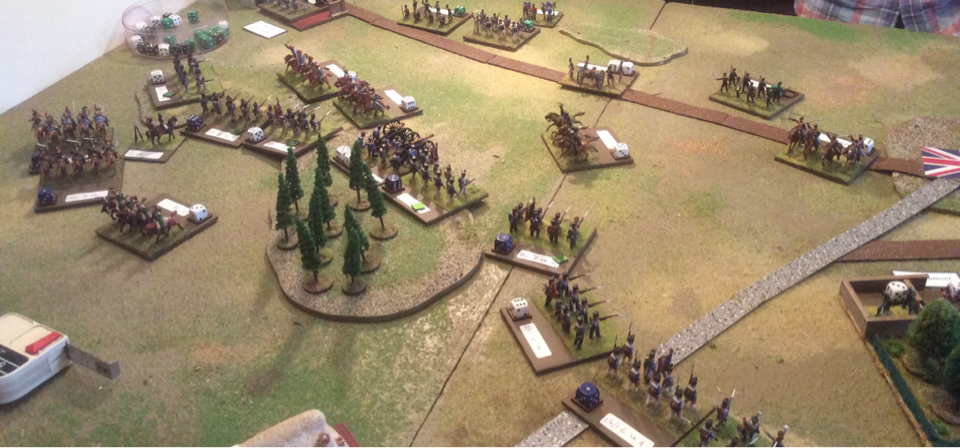
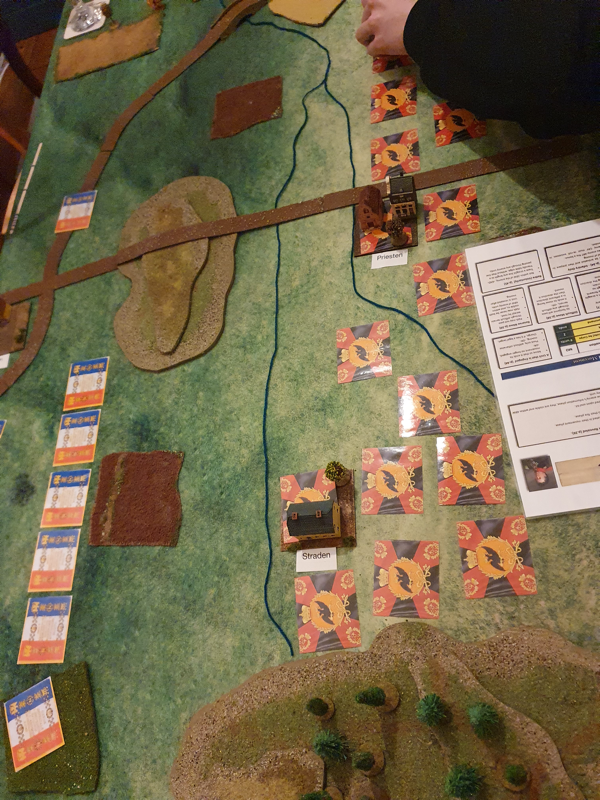
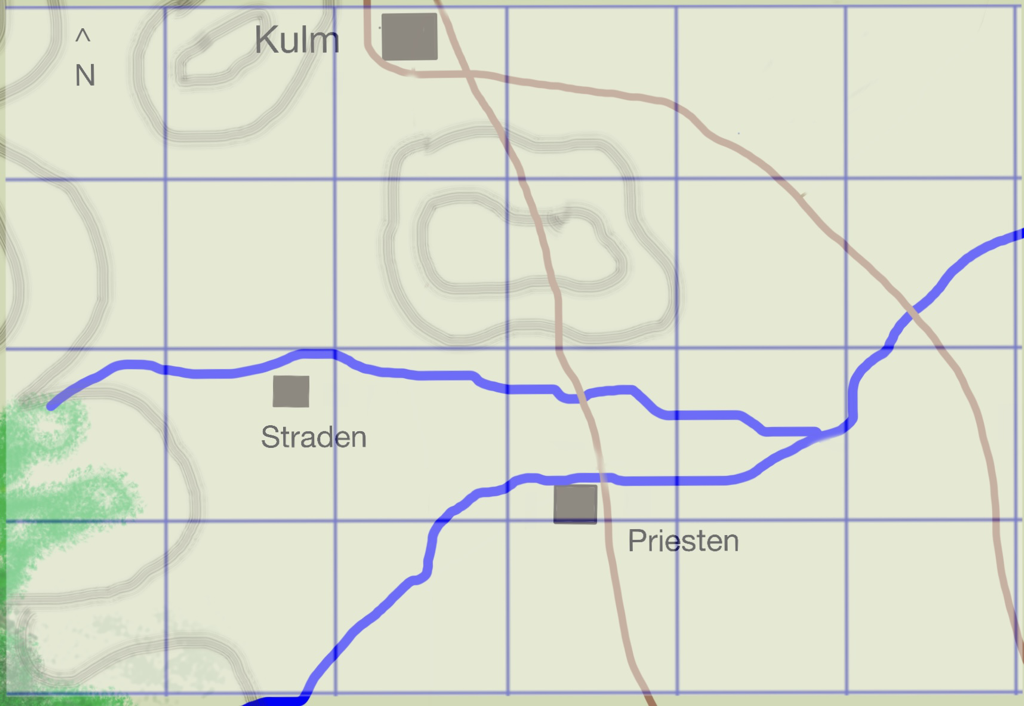
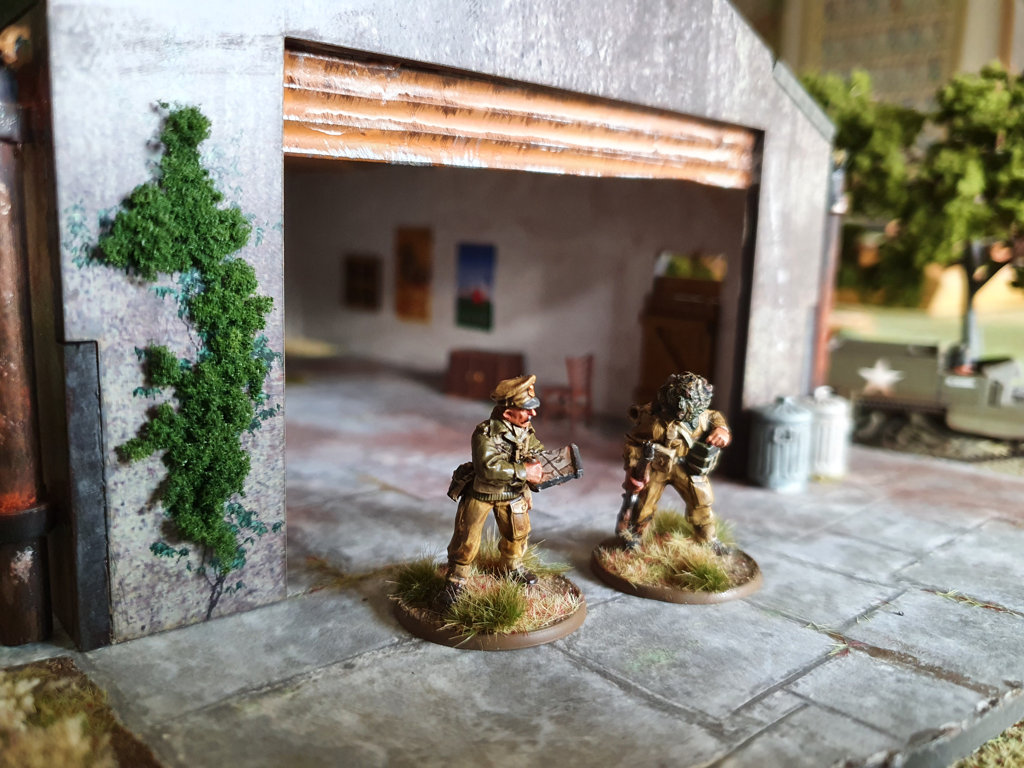
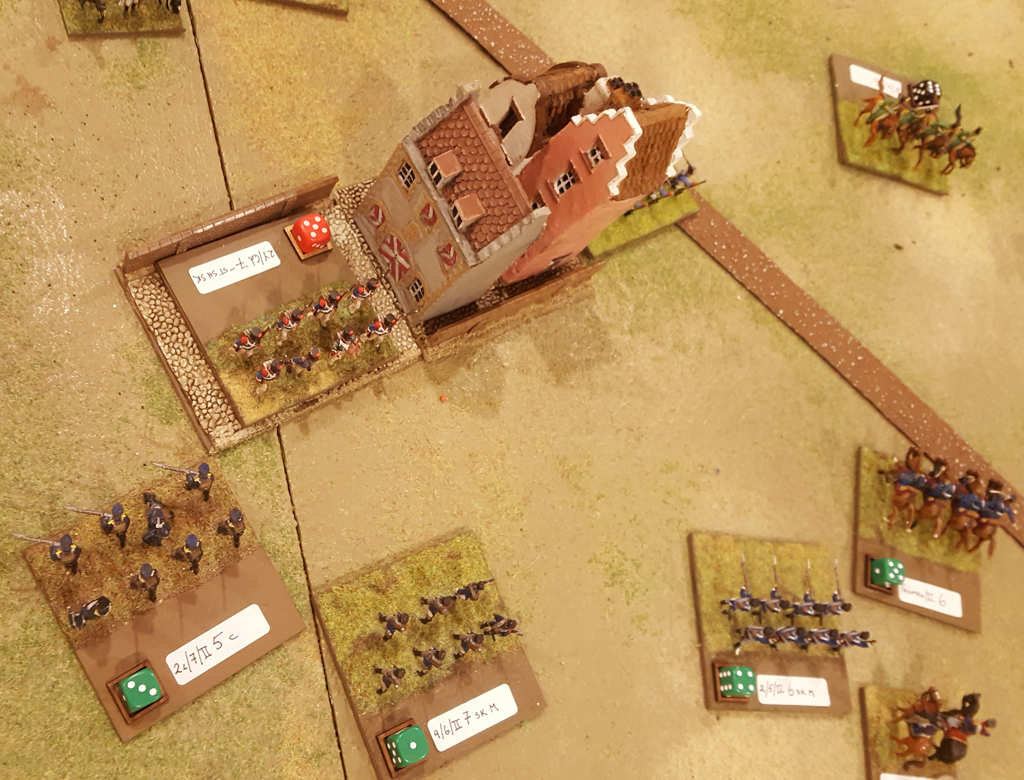
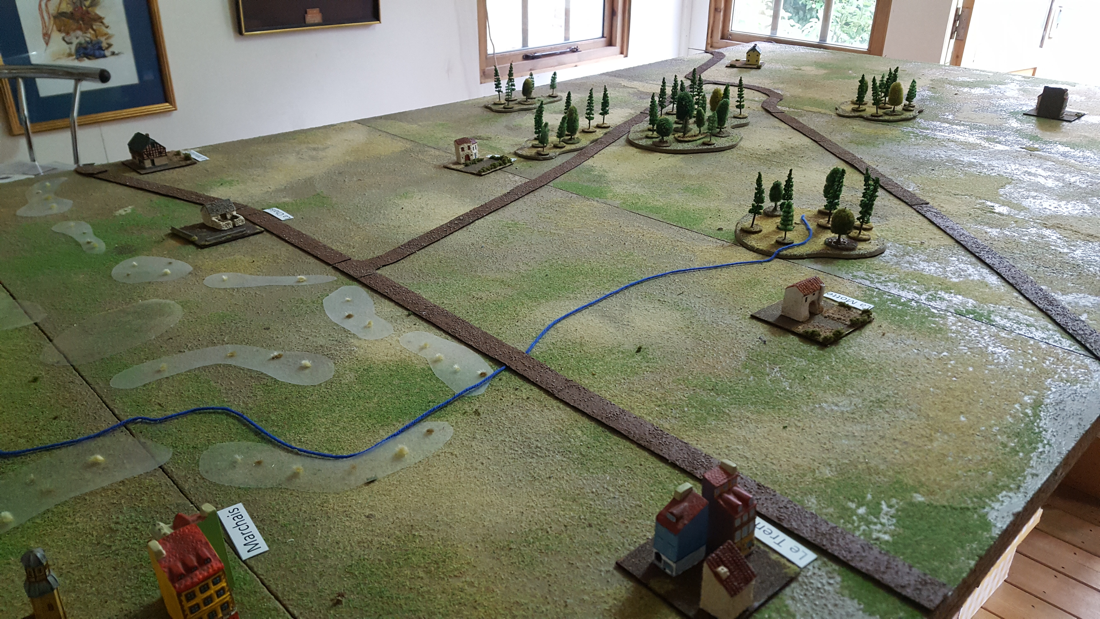
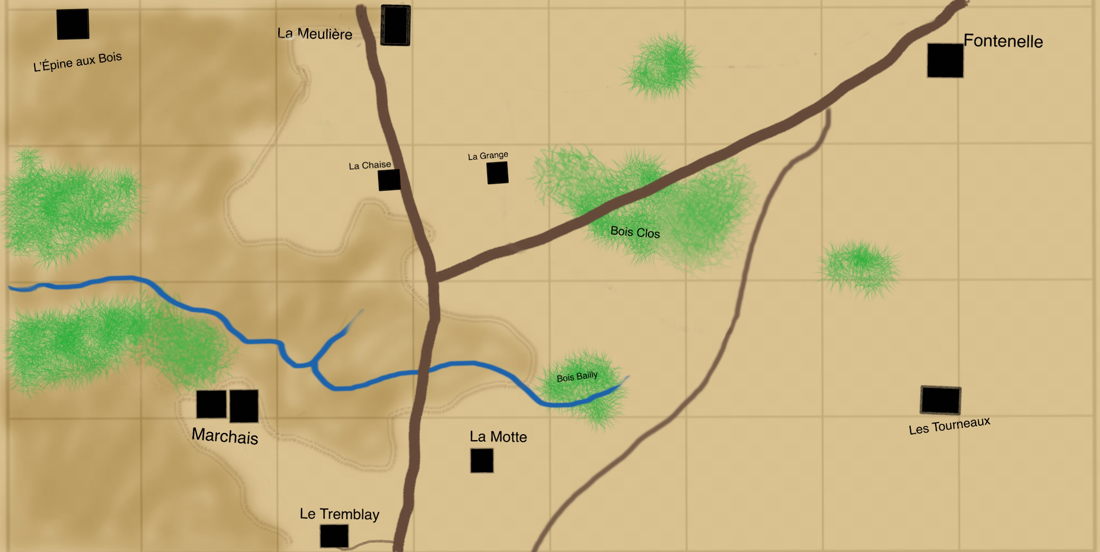
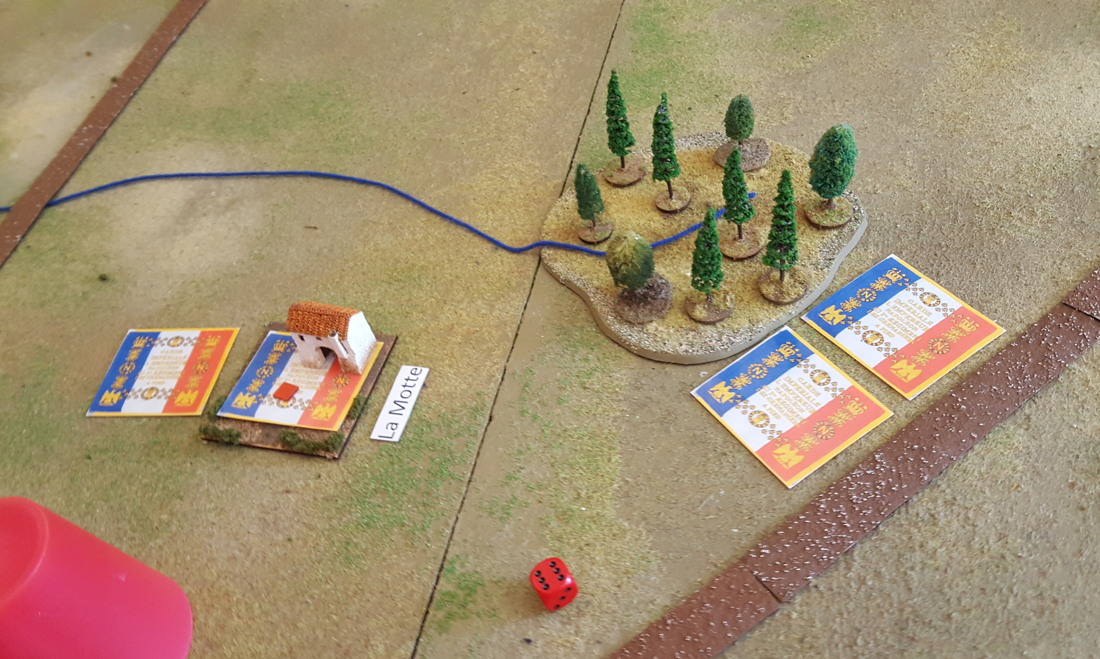
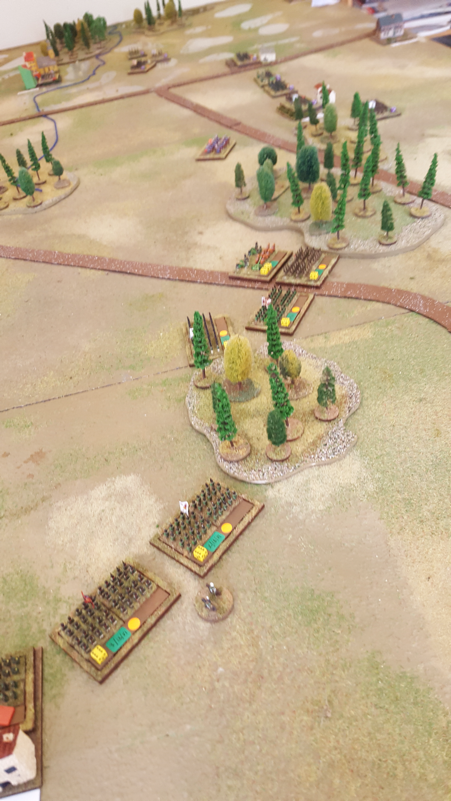

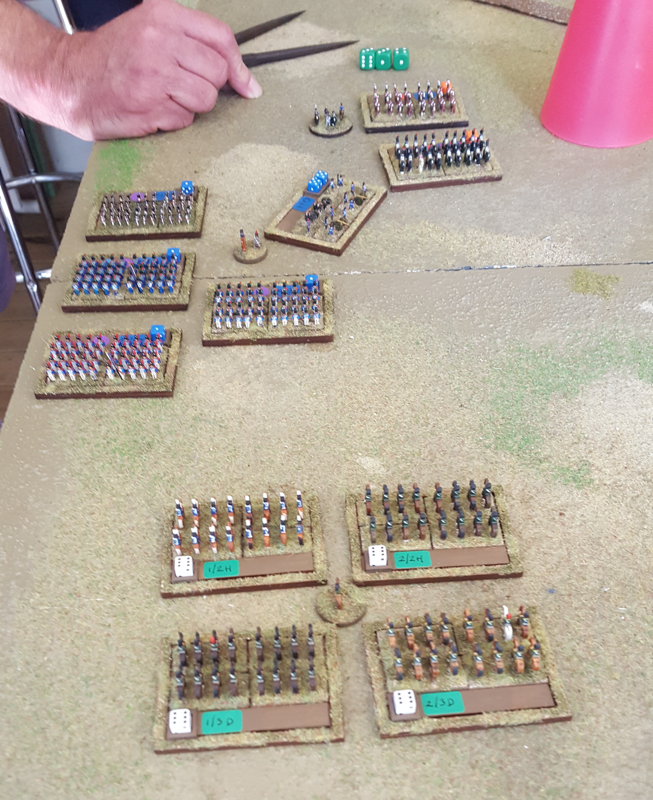
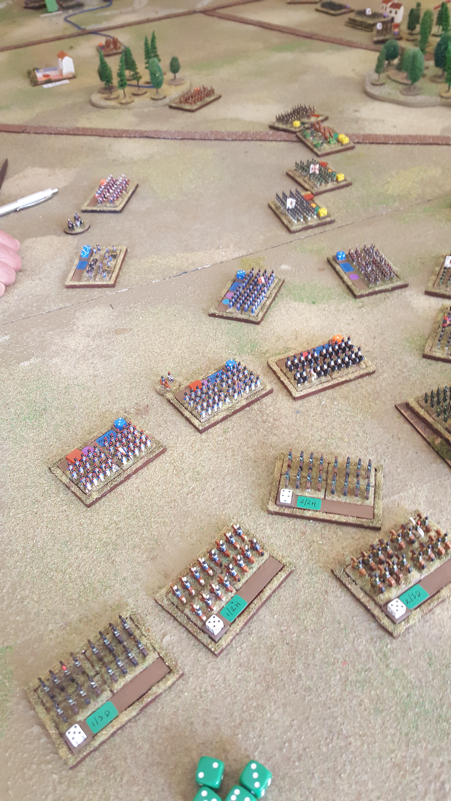
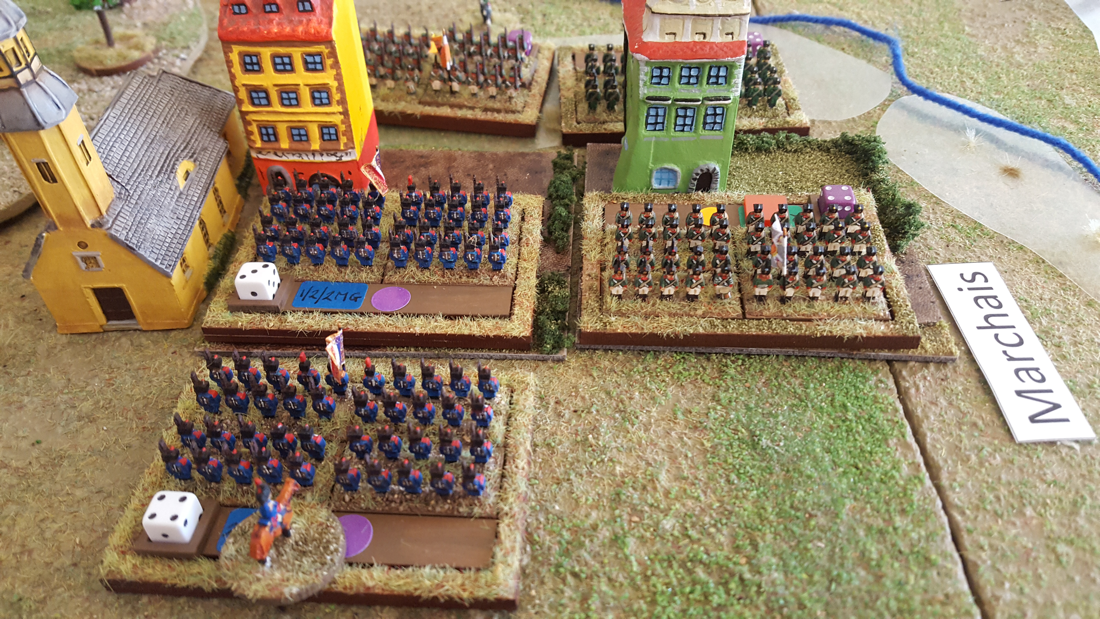
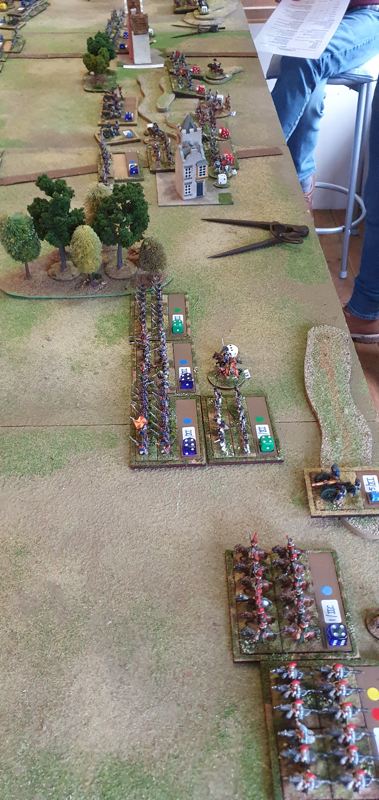
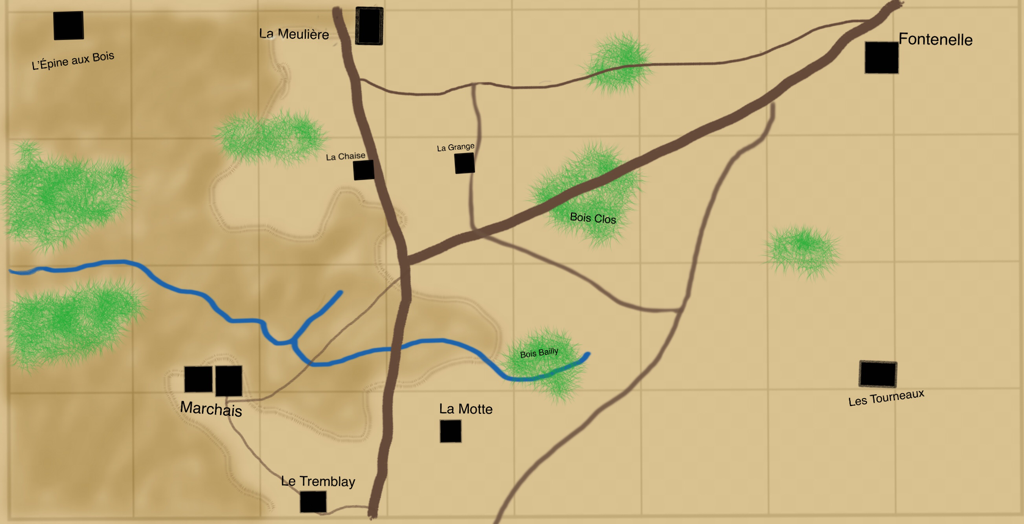
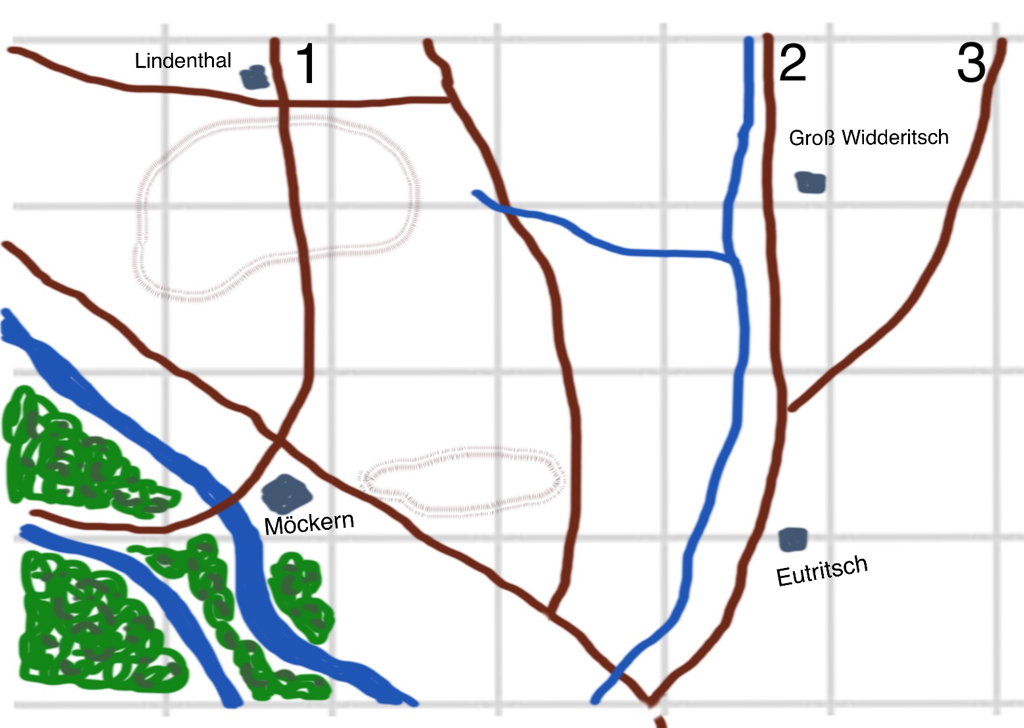
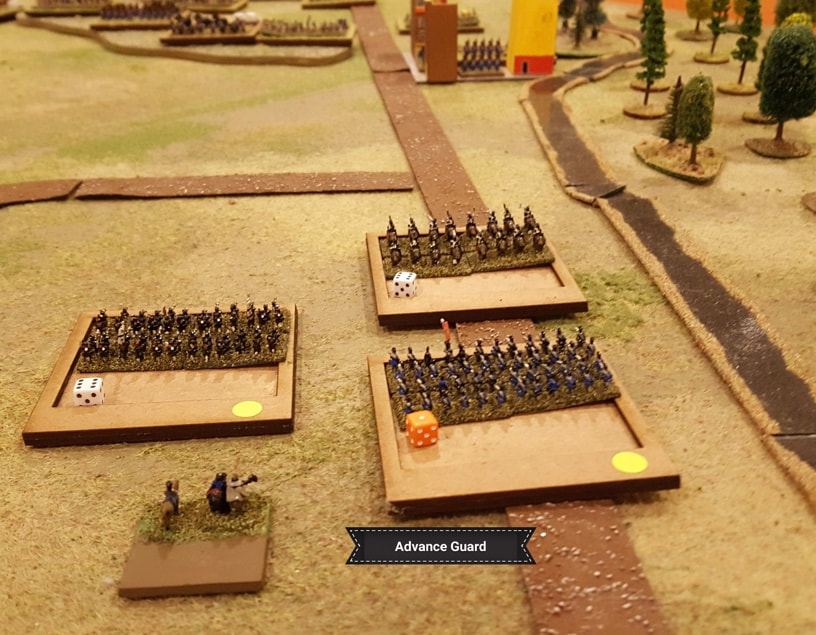
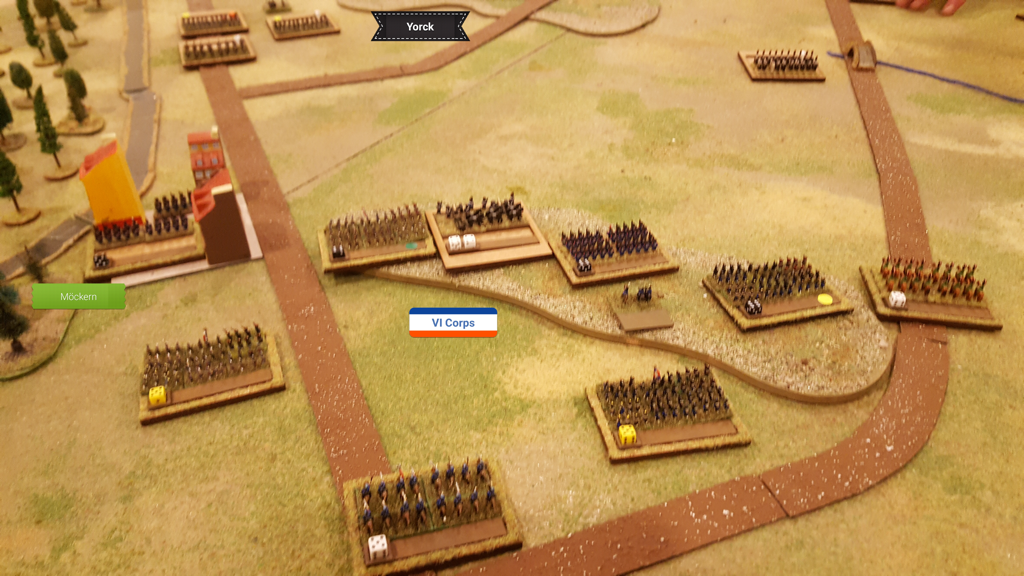
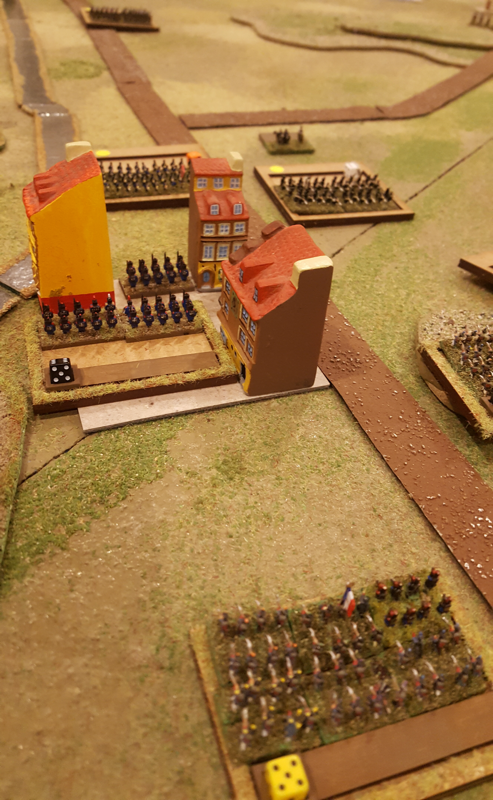
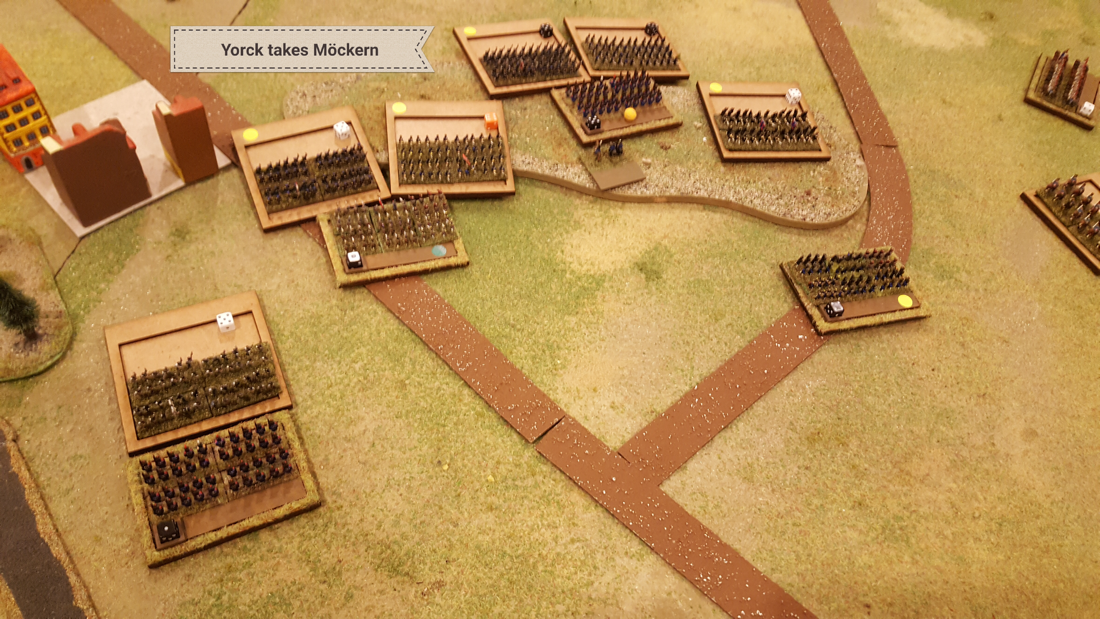
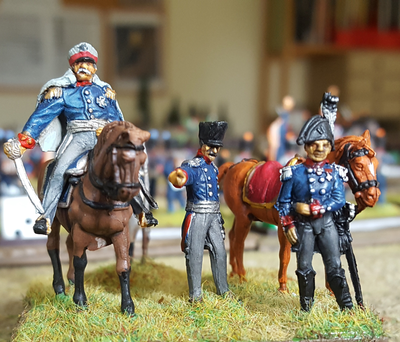
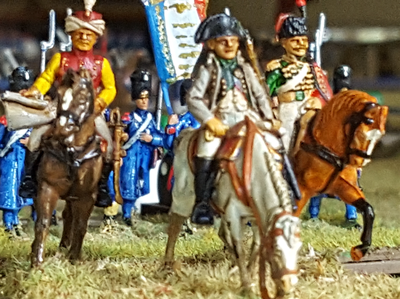
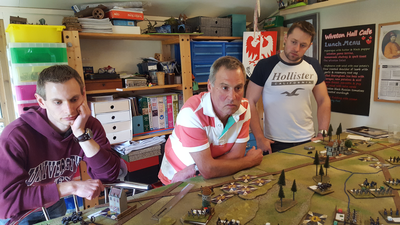
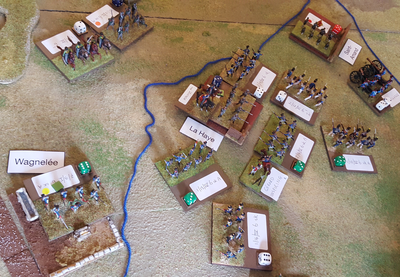
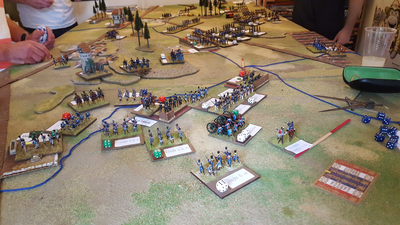
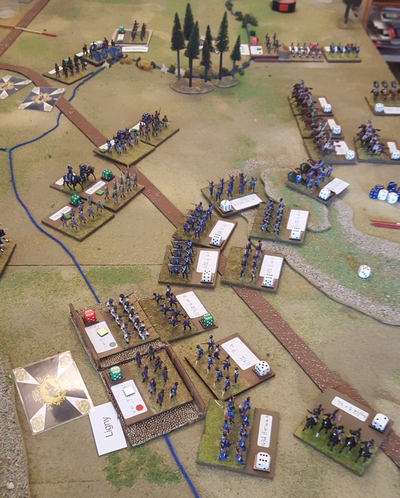
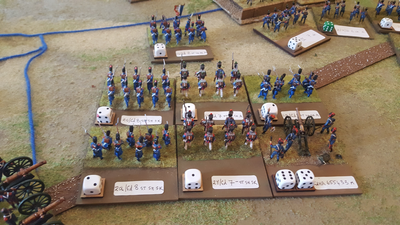
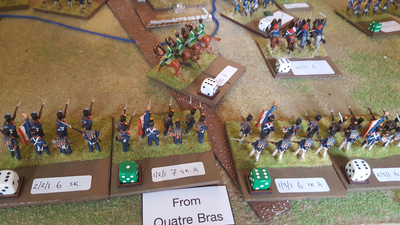
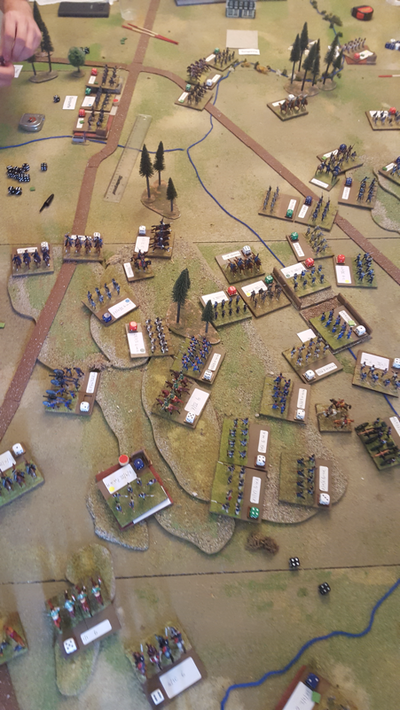
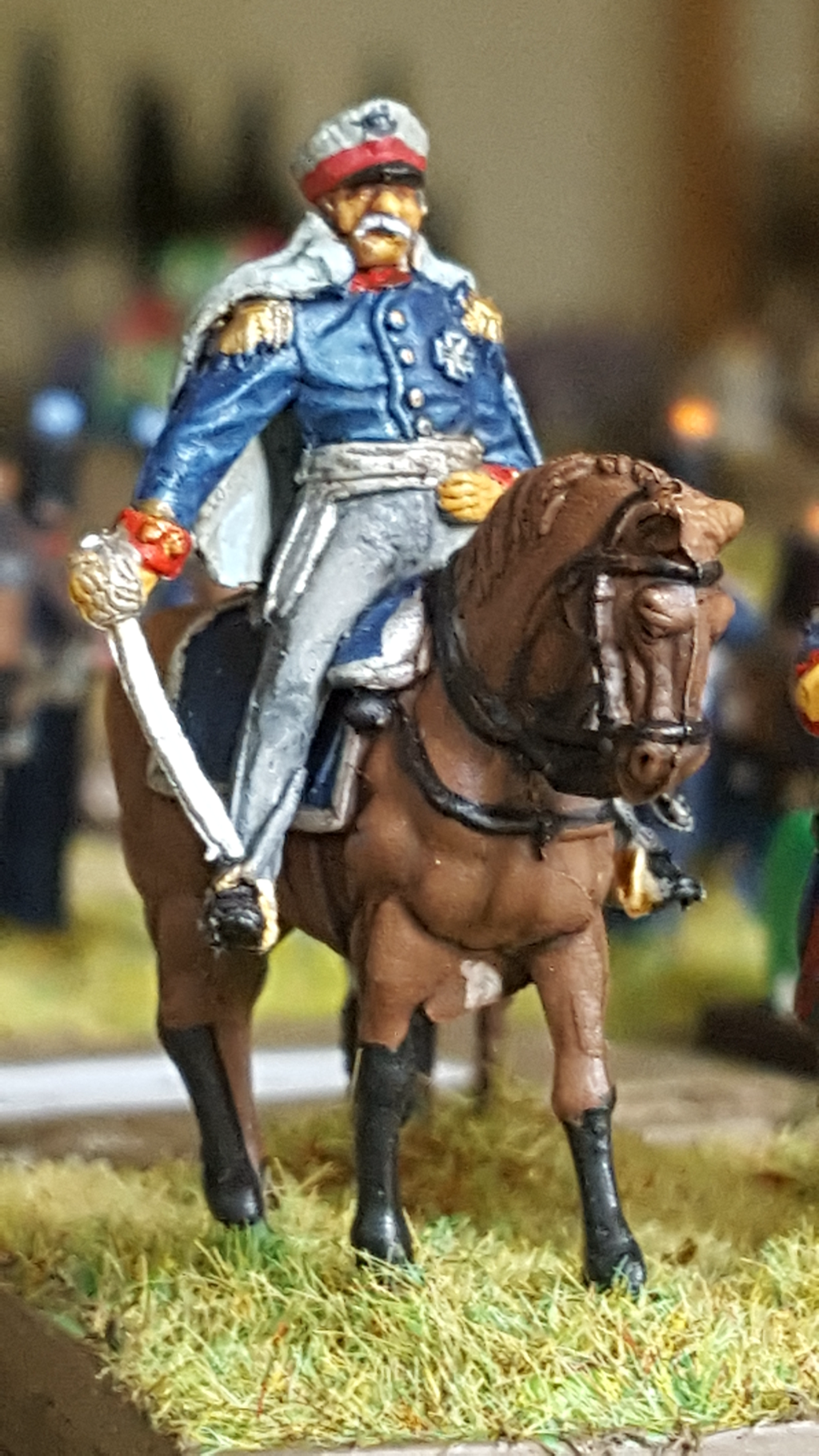
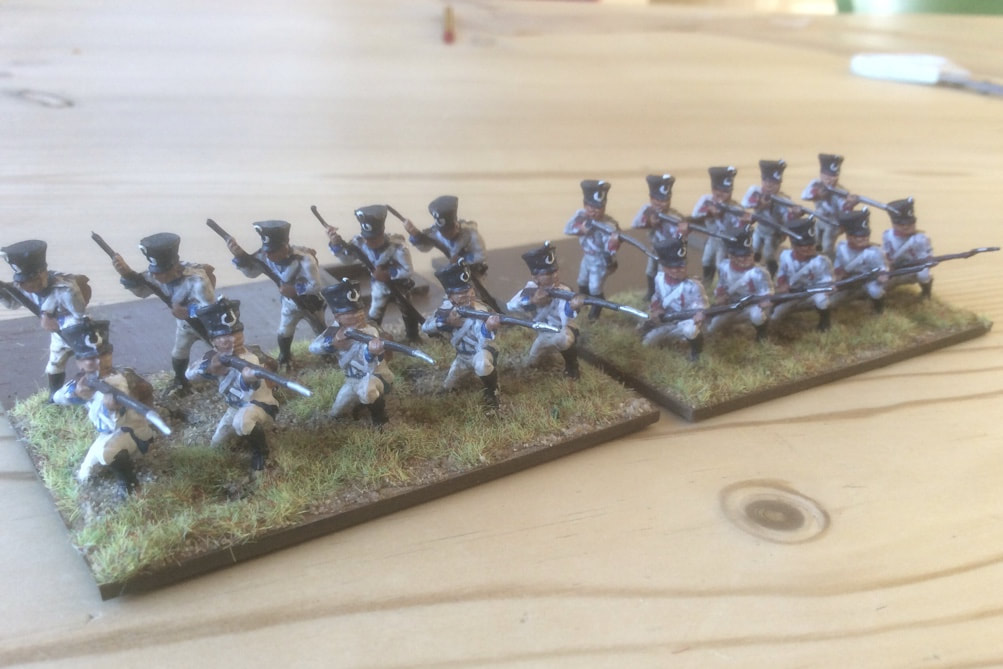
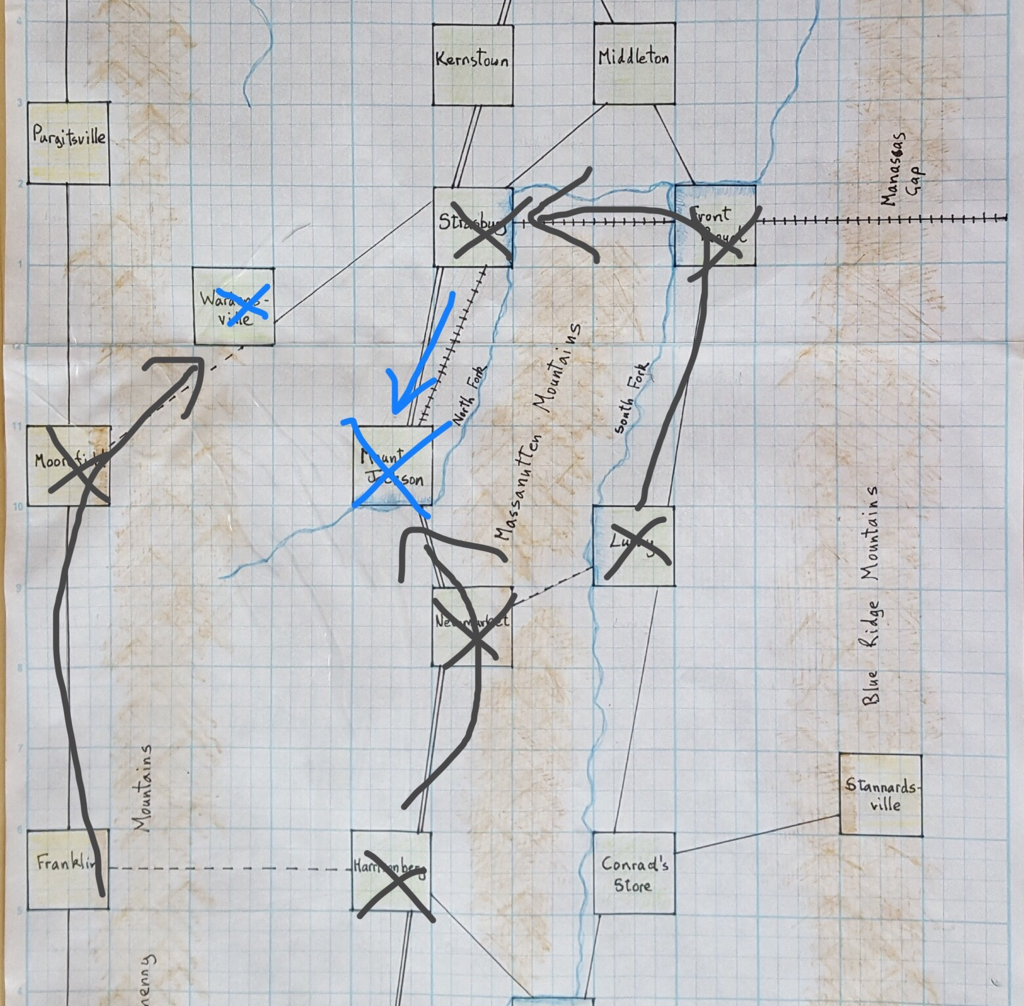
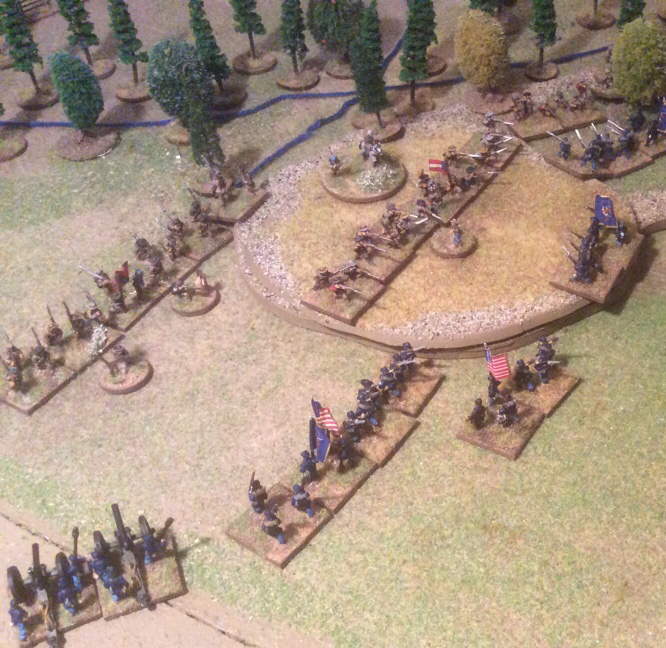
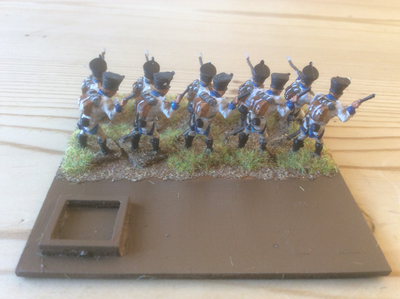
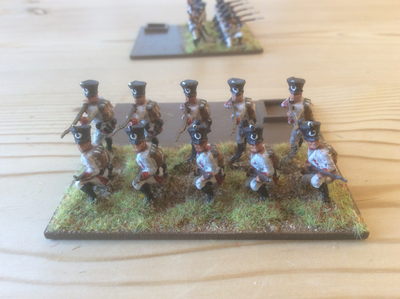
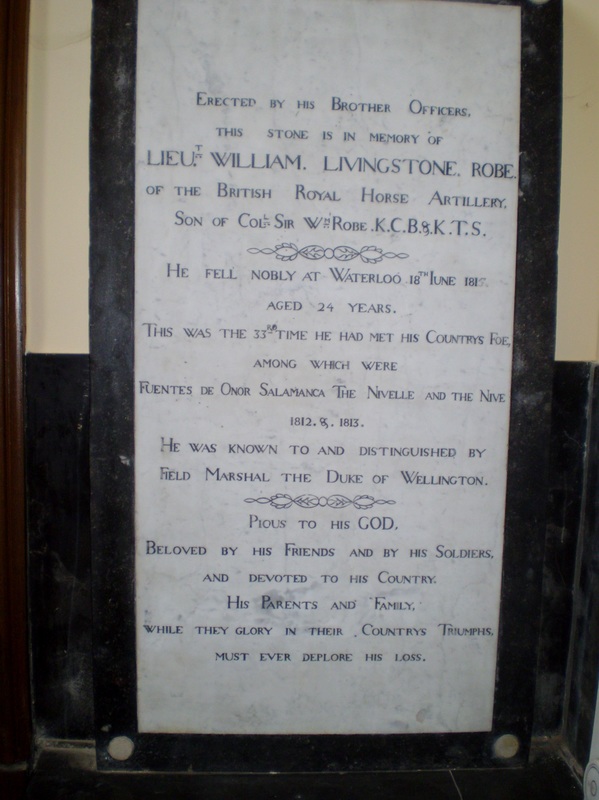
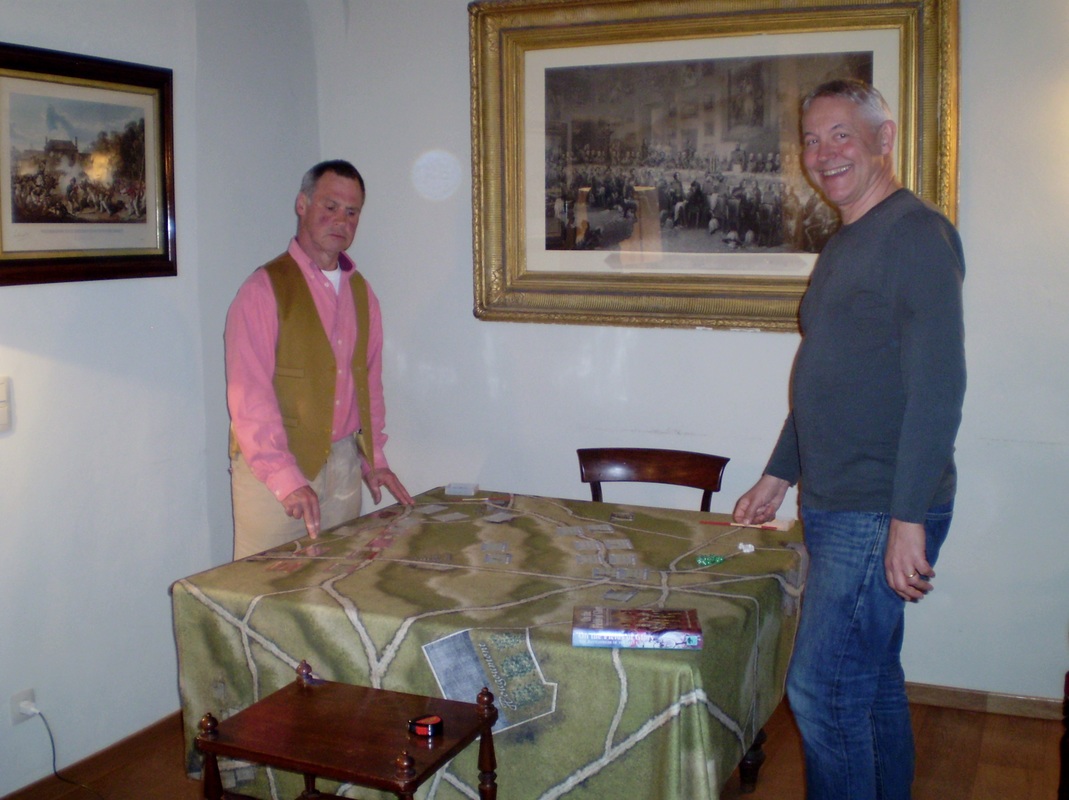
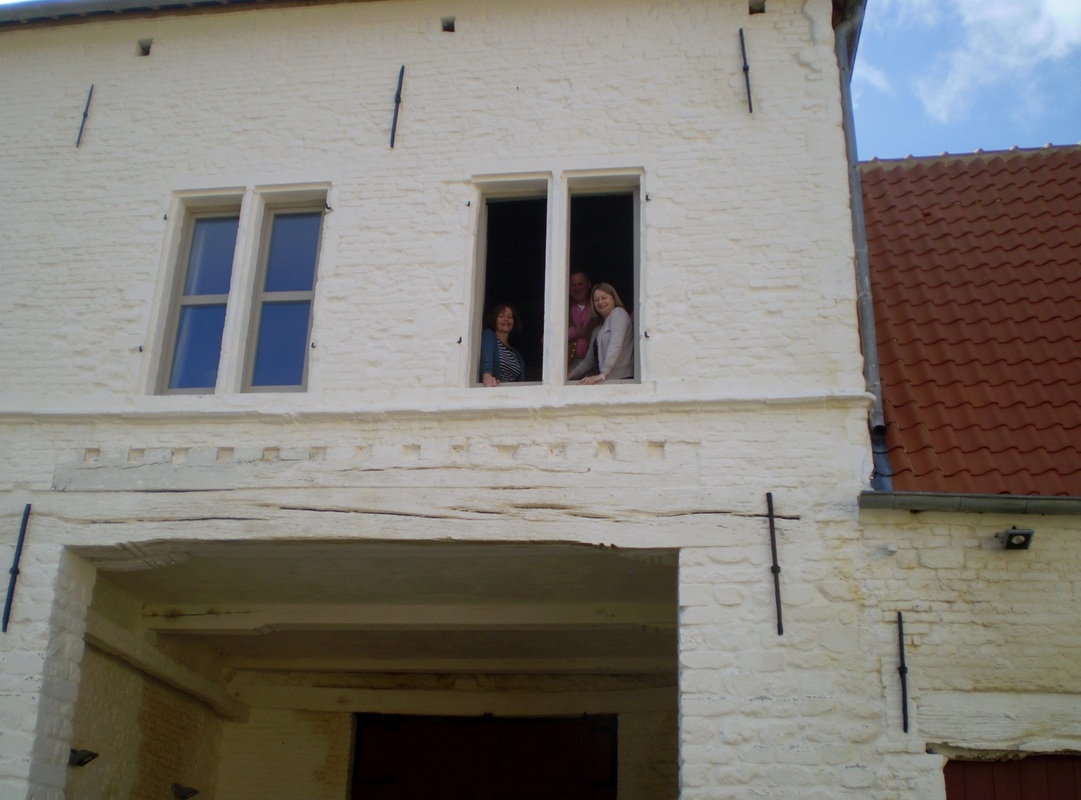
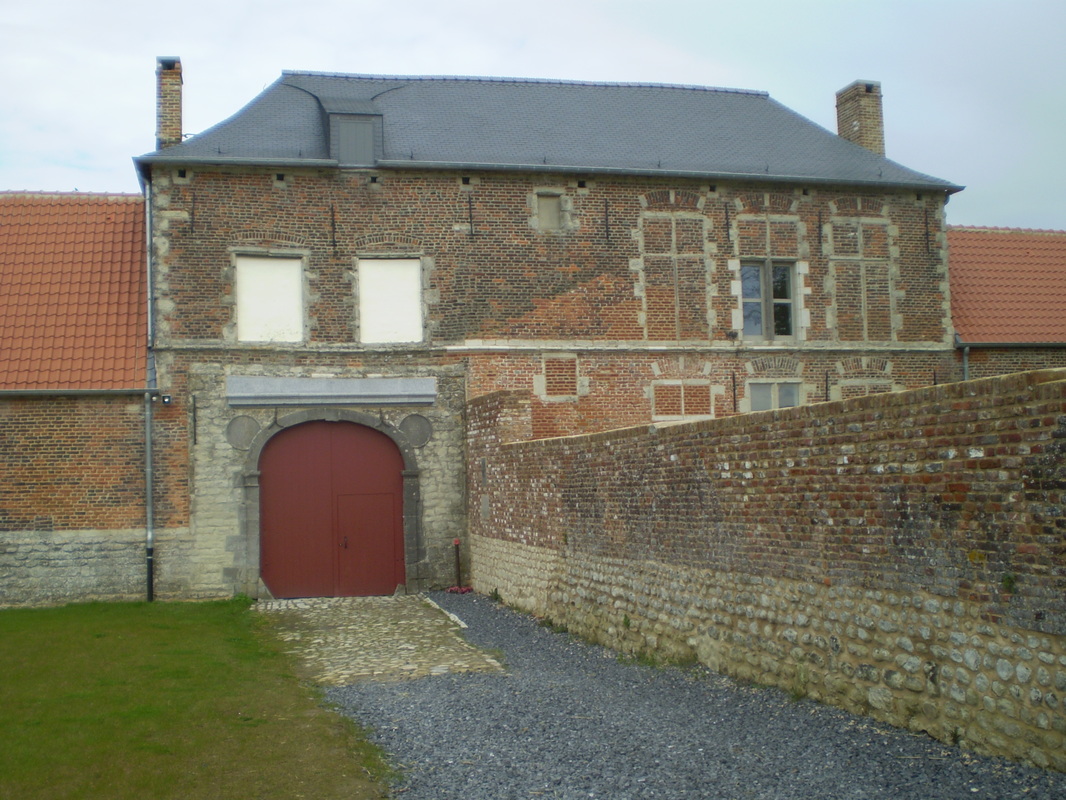
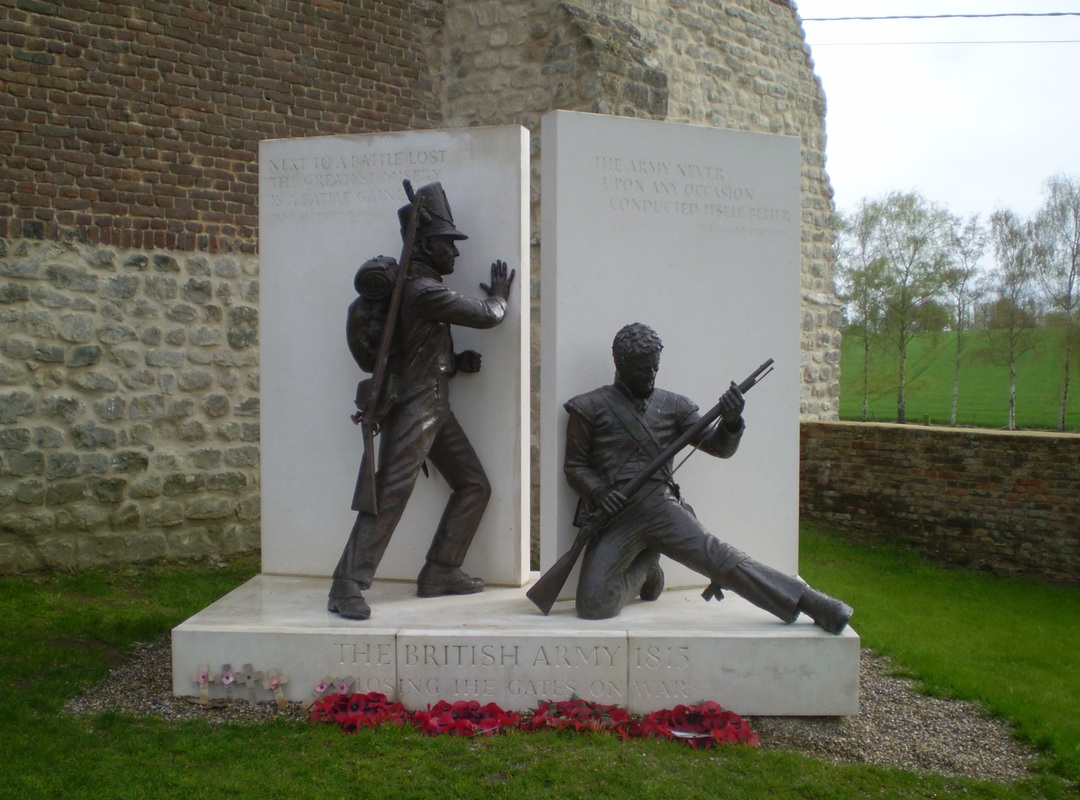
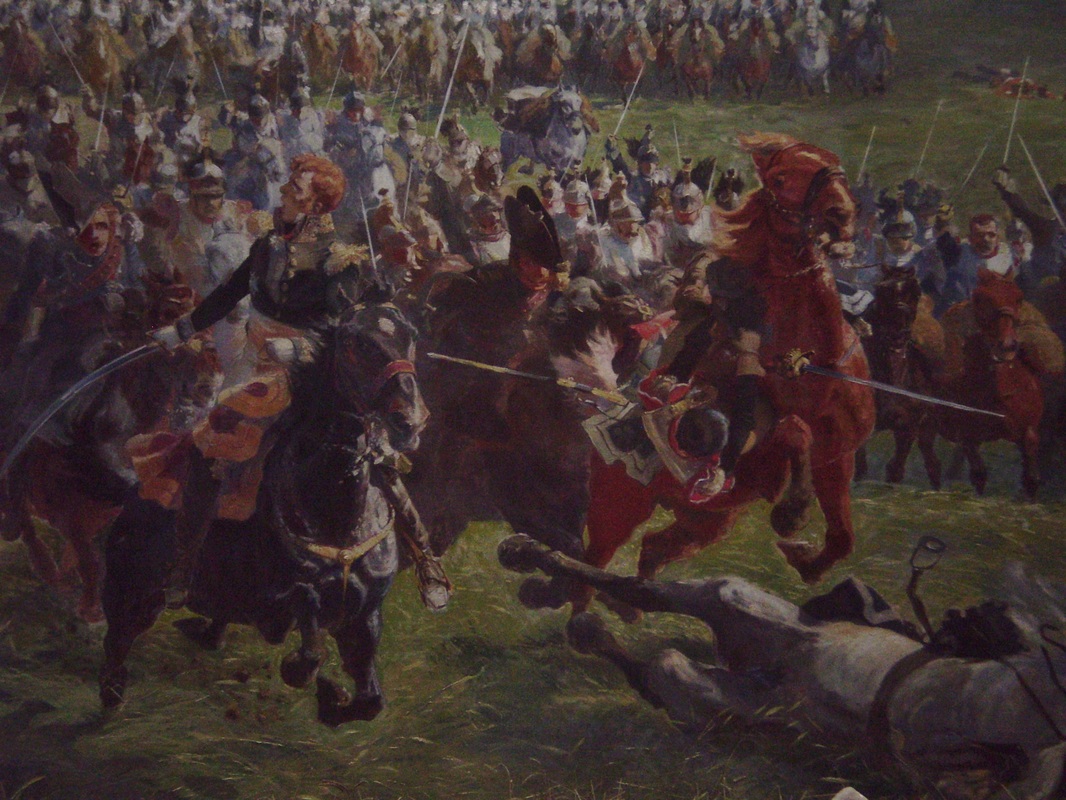
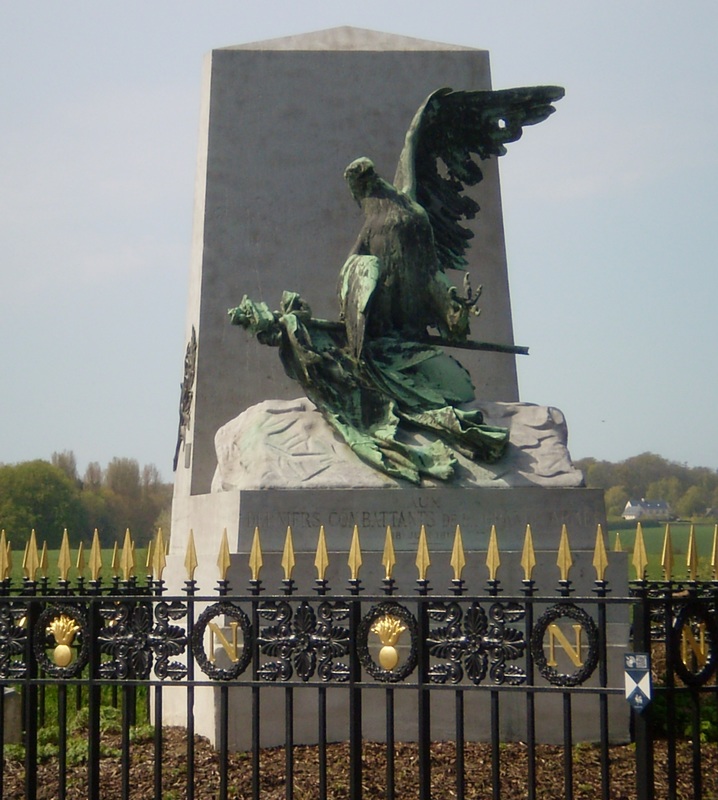
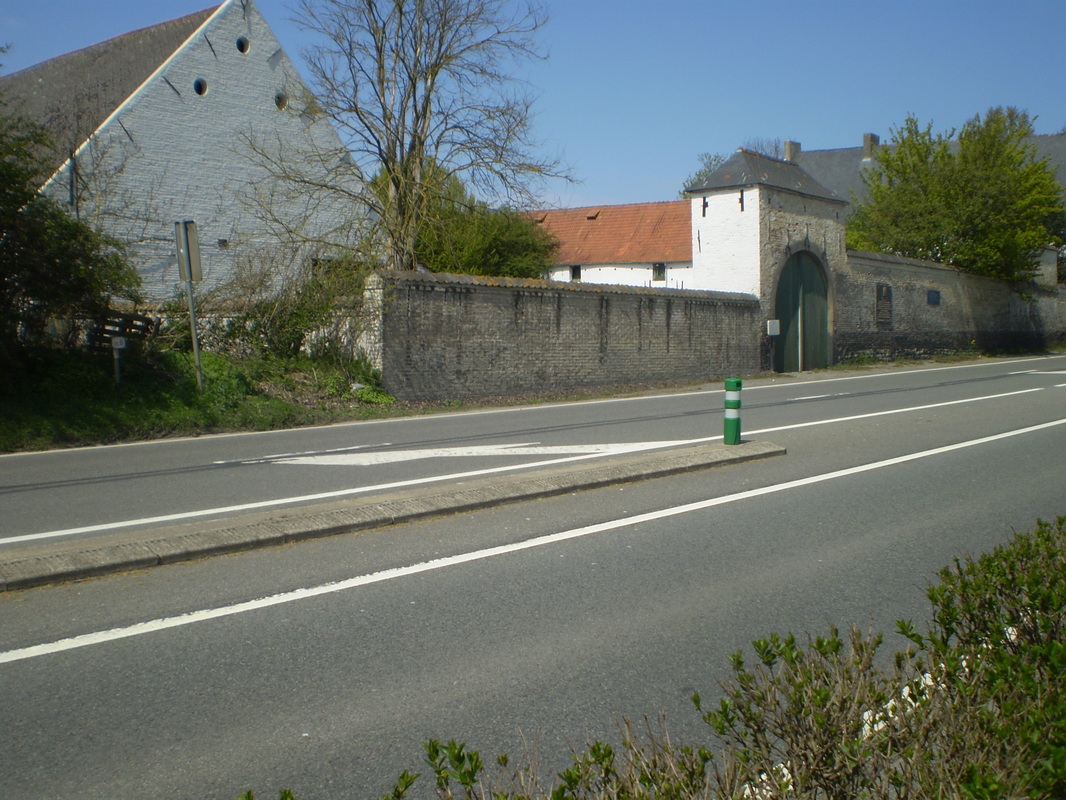
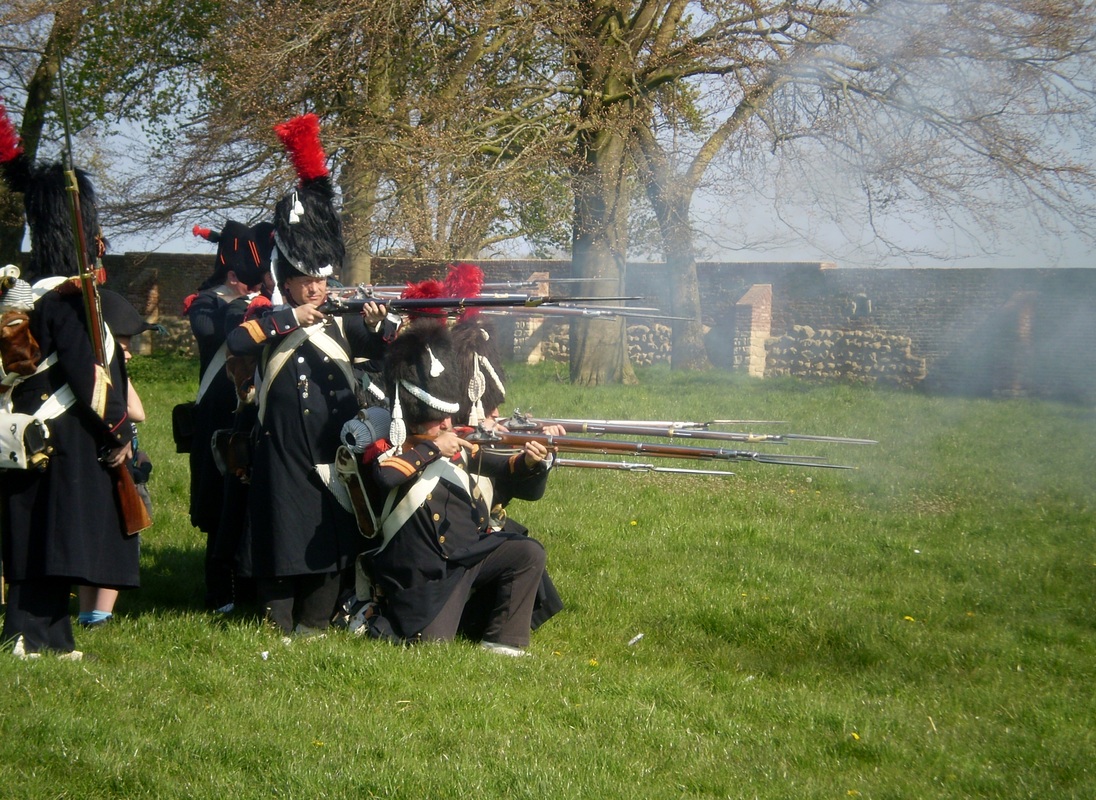
 RSS Feed
RSS Feed